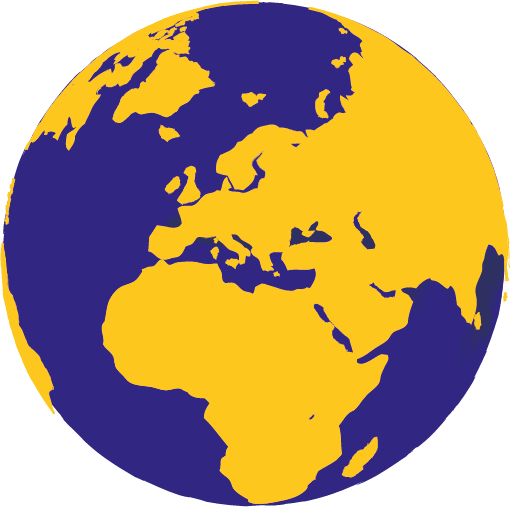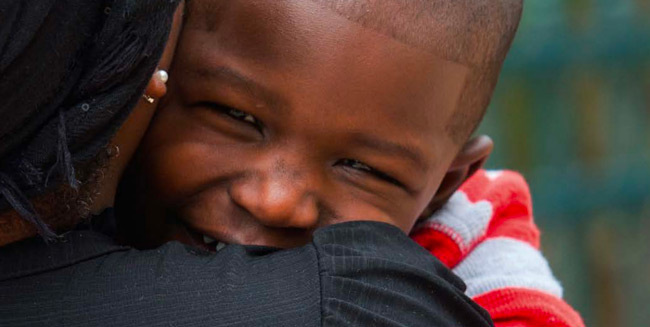Five years ago today, my family and I had just buried my father. Hundreds attended his funeral. We had the time we needed to mourn and were comforted by extended family and friends. It felt like no more than we deserved - losing a parent is devastating.
So the news of the earthquake in Haiti, which left more than 200,000 dead i, was numbing. All those people, in their basic fight for survival, would have no opportunity to hold funerals or mourn their loved ones – already buried beneath piles of rubble. Individual grief feels selfish in the face of such disaster.
Estimates suggest more than 100,000 children died and a similar number were injured. Around 124,000 children lost one parent and 7,000 children are thought to have lost both. ii
My immediate concern was the response to children who were orphaned or separated. It seemed inevitable that setting up ‘orphanages’ would be the default solution, as frequently happens in cases of natural disaster iii. I could only hope that such facilities would be temporary, that humanitarian aid from around the world would help develop community-based care and family support. After all, most orphans have extended families that usually care for them if they have sufficient means.
But responses to previous disasters teach us that once orphanages are established, they proliferate unless a conscious intervention is made to provide different systems of care. The response to the 2004 Indian Ocean Tsunami is a case in point. According to one study, “… the enormous humanitarian outpouring… with new donors seeking to disburse considerable sums of aid has been a major factor in driving up the number of new Children’s Homes... Substantial new funding has been injected into institutional care responses in Aceh as a result of the Tsunami both from the Government and from [NGOs], local and international.” iv
The same study found that 97.5% of children placed orphanages following the 2004 tsunami, were placed by their families, to access free education. If funding had provided education in the community rather than institutions, the majority of children could have remained with their families. v
Sadly, five years after the earthquake, the government of Haiti, amongst the many challenges it faces, is trying to address the proliferation of orphanages, many of which are providing poor quality care and putting children at risk of harm vi.
The earthquake did create genuine orphans but, as in Aceh, there appears to be a misconception that Haiti’s orphanages are full of orphans as a result of events in 2010. In fact, as in many countries around the world, the majority of children living in Haiti’s orphanages – probably around 80% - have at least one living parent. Orphanages are NOT full of children without parents, wherever and whenever we find them vii.
During recent visits to Haiti I heard from doctors, school principals and human rights activists that many children are in orphanages because families cannot afford medical costs or school fees. Free healthcare and education could potentially prevent many children from being separated from their families. It is encouraging to hear the progress made by the Haitian government in reaching out to the poorest children and families. According to a government representative, “1.4 million children are now getting their primary education for free, releasing the burden on parents” viii.
At a recent Lumos event, In Our Lifetime, at which our President J.K. Rowling was the keynote speaker, Arielle Villedrouin, Director of IBESR, (the Haitian government department responsible for children’s care), spoke of their efforts to tackle the proliferation of orphanages and the unnecessary separation of children from families. She said: “We conducted an assessment of orphanages in Haiti [and] classified [them]: those meeting standards; those needing improvement; those requiring immediate closure. So far we have closed more than 100 orphanages and we have enacted a moratorium on opening new orphanages in Haiti.”
Sustained, coordinated support to the Haitian government is needed on the part of aid agencies, to establish community support structures that prevent separation of children from families, and to address orphanages that proliferate due to well-intended but misguided external interventions.
It is hoped that lessons from Haiti, as well as from Aceh, can be learned before the next major disaster results in further mass separation of children from their families.
As Ms Villedrouin said of her country’s future, “Sustainable human development is not possible if today’s children cannot live with dignity in their families. Children are our legacy for the future, not buildings.”
................................................................................................................................
i This number is based on an estimate of 230,000 total deaths (USAID/DCHA Haiti Earthquake Fact Sheet #54, 15 May 2010) and the U.S. Census Bureau estimate that 45% of the population was below age 18.
ii Ibid
iii See for example: Williamson, J. and Greenberg, A. (2010) Families not Orphanages. Better Care Network Working Paper. Better Care Network.
iv Save the Children, Indonesian ‘orphans’ on the increase as Tsunami pushes parents into poverty and children in institutions,” F Martin and T Sudraja (2006), A Rapid Assessment of Children’s Home in Post-Tsunami Aceh, Save the Children UK and Indonesia Ministry of Social Affairs,
v F Martin and T Sudraja (2006).
vi In June 2013, two governmental agencies - the Ministere des Affaires Socialese et du Travail (MAST) and L’Institut Bien Etre at de Recherches (IBESR) - released a report on Haitian orphanges, L’Annuaire des Maisons d’Enfants. It found that 90% were ‘sub-standard’ and fewer than 10% were officially registered
vii see Lumos factsheet
viii Speech by Allison Llera, then-Counsellor to the Prime Minister of Haiti, at the Lumos-hosted conference, In Our Lifetime. London, 26 November 2014.



